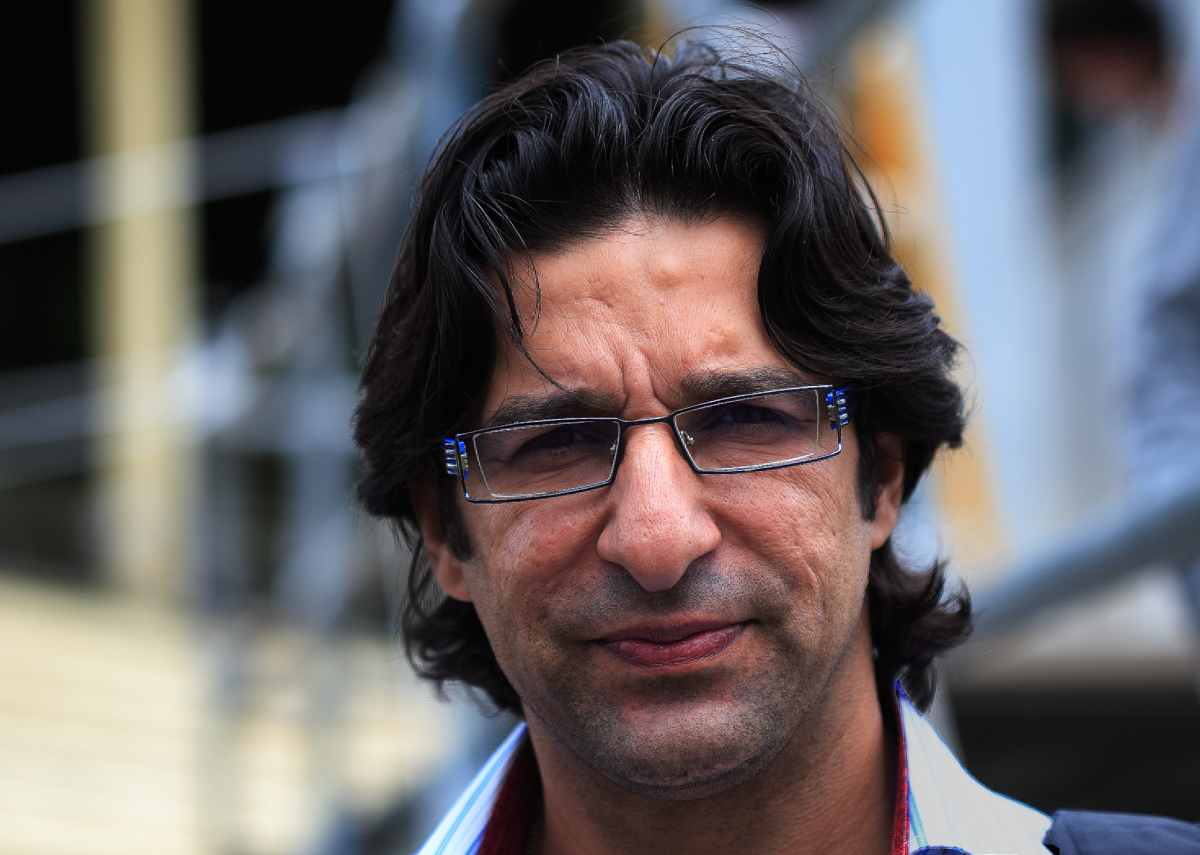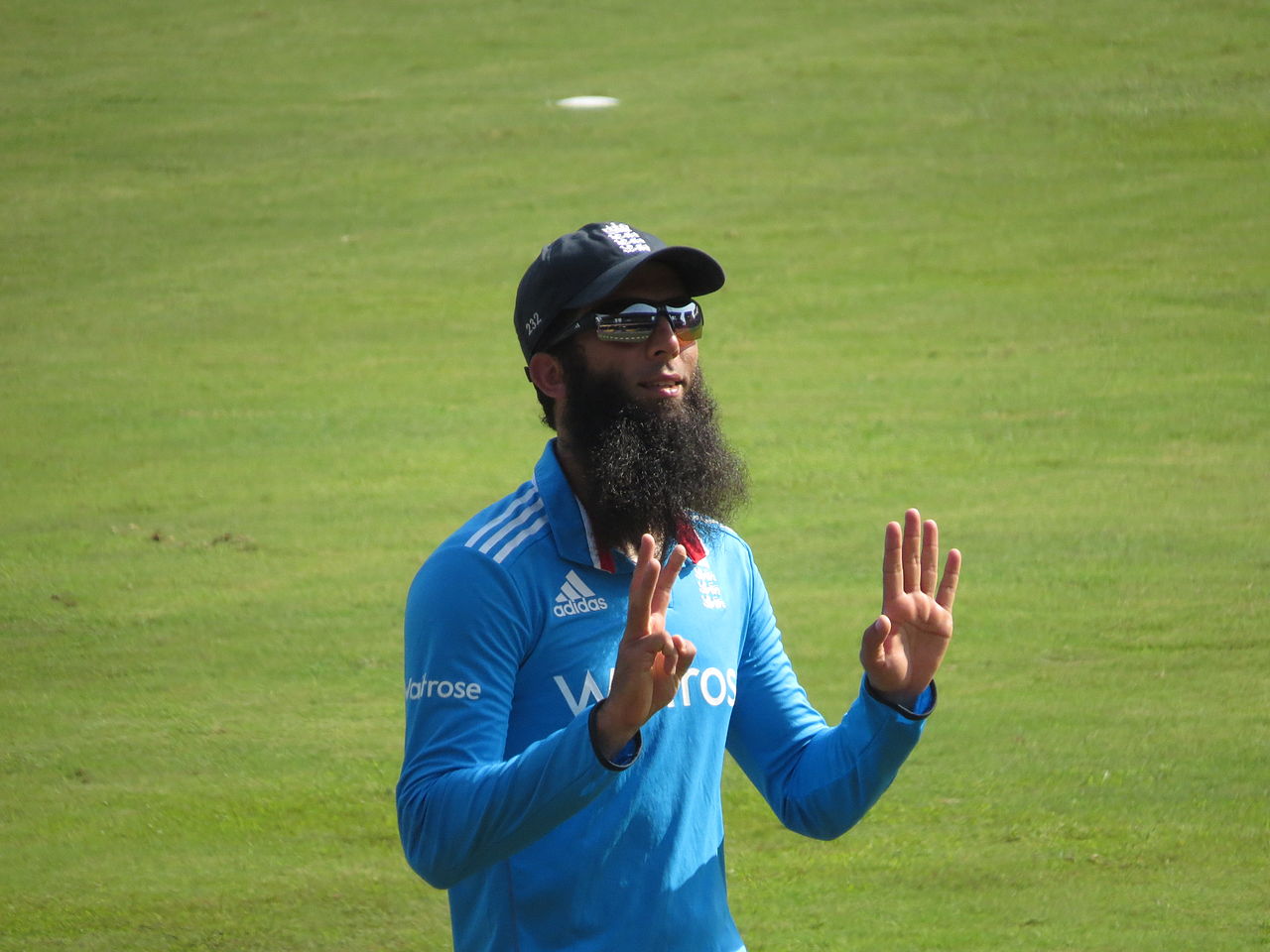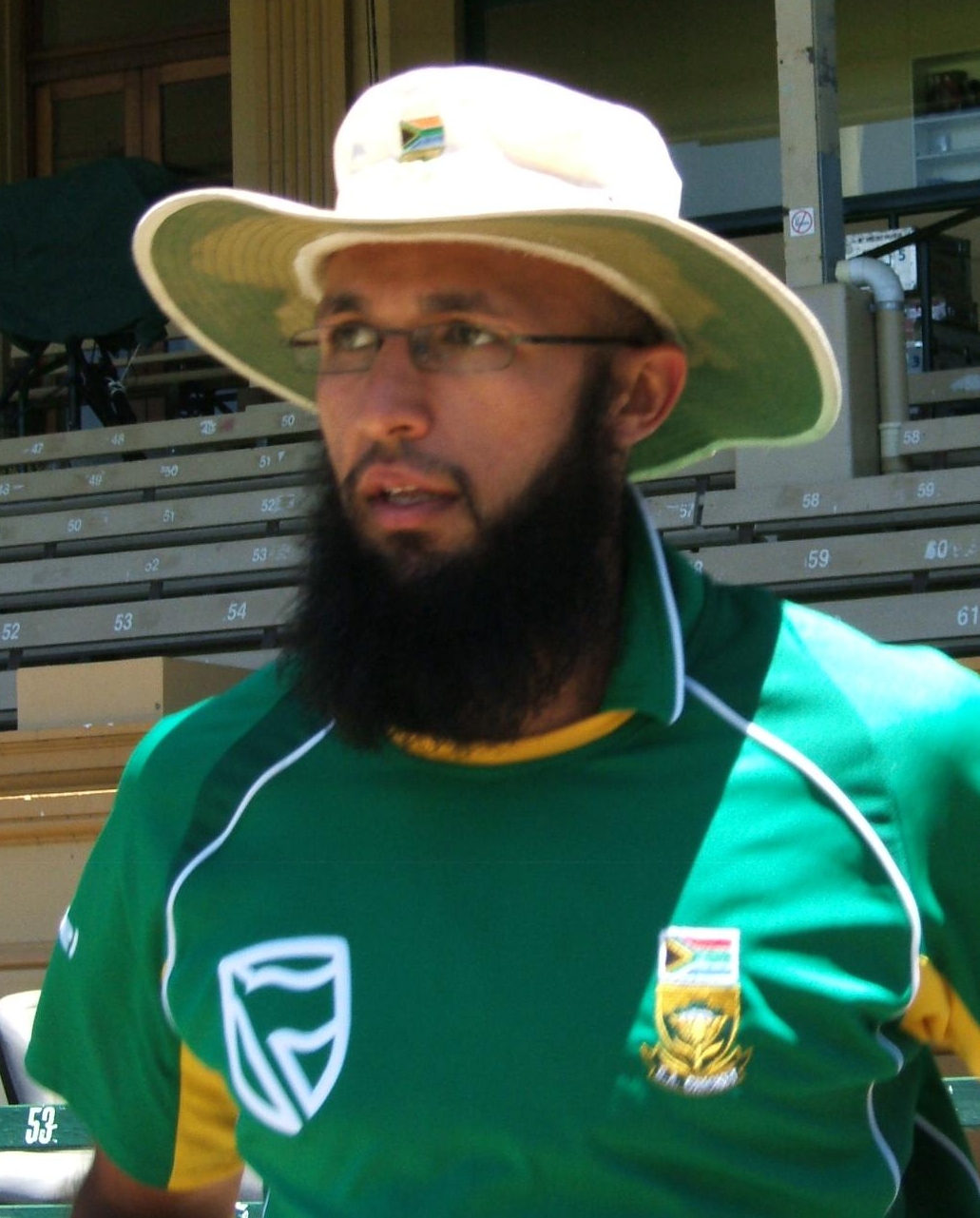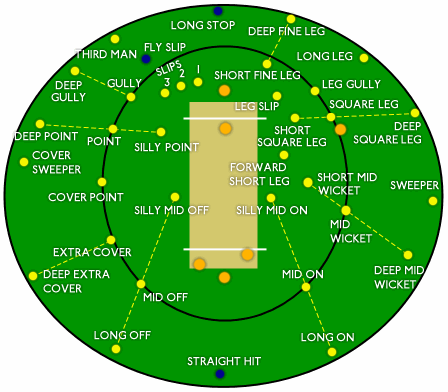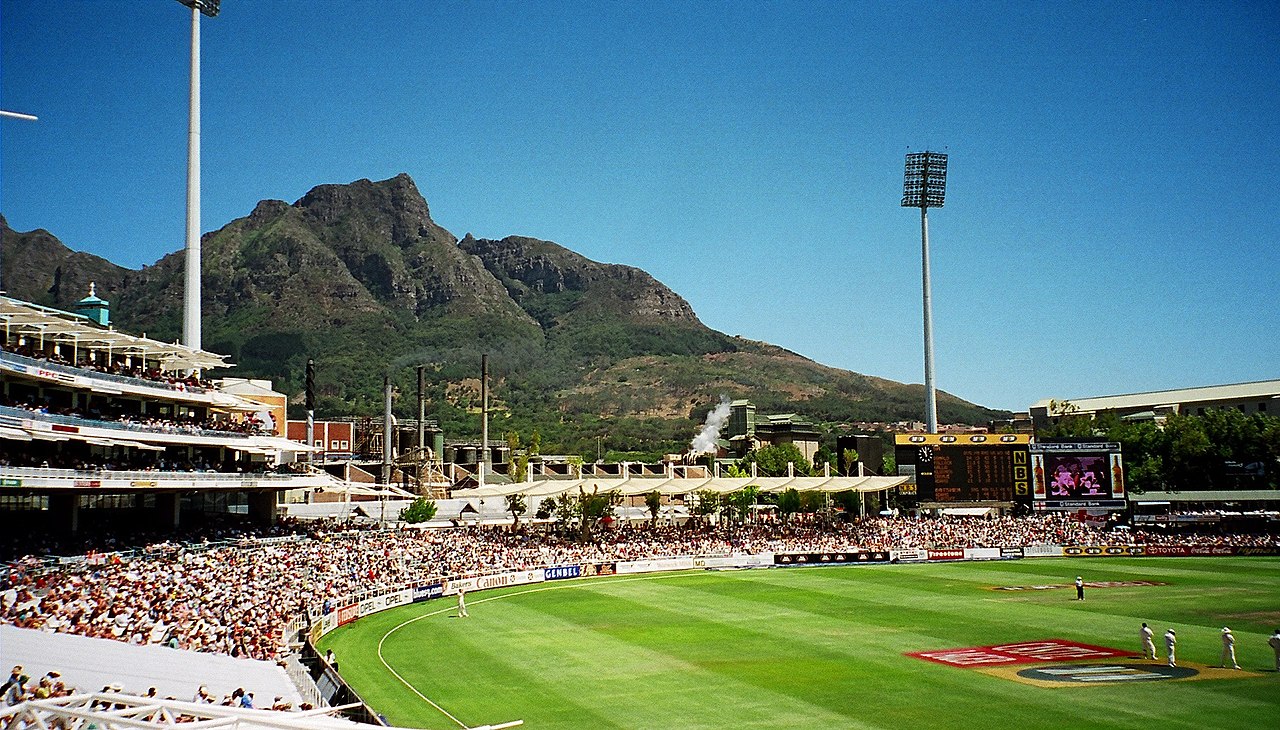Cricket
From Halal Explorer
Welcome to eHalal's Hall of Fame for Muslim Cricketers, a tribute to the outstanding athletes who have left an indelible mark on the world of cricket. This prestigious collection celebrates the achievements and contributions of Muslim cricketers from across the globe, highlighting their skill, dedication, and impact on the sport.
From iconic captains who led their teams to historic victories, to formidable bowlers whose deliveries left batsmen in awe, and elegant batsmen who mesmerized audiences with their stroke play—each inductee in our Hall of Fame has demonstrated excellence on and off the field.
Explore the stories of cricketing legends who have inspired generations, from Imran Khan's leadership to Wasim Akram's mastery of swing bowling, and Saqlain Mushtaq's innovation of the "doosra." Discover the resilience of players like Inzamam-ul-Haq and the all-round brilliance of Moeen Ali, whose contributions have shaped the narrative of modern cricket.
Join us in honoring these remarkable individuals who have not only excelled in cricket but have also exemplified sportsmanship, perseverance, and the values cherished by the global Muslim community. Their achievements continue to resonate, inspiring future generations of cricketers to strive for greatness on and off the pitch.
At eHalal, we celebrate diversity in sports and recognize the profound impact of Muslim athletes in shaping the landscape of international cricket.
Contents
Famous Muslim Cricketers
If you're looking for a list of well-known Muslim cricketers who have made significant contributions to the sport, here are some actual prominent figures:
[[File:President Trump Meets with the Prime Minister of Pakistan (48350243921).jpg|1280px|President_Trump_Meets_with_the_Prime_Minister_of_Pakistan_(48350243921)]]
- Imran Khan (Pakistan) - Legendary all-rounder, World Cup-winning captain, and influential politician.
- Wasim Akram (Pakistan) - Renowned left-arm fast bowler, known for his swing and seam bowling.
- Shoaib Akhtar (Pakistan) - Former fastest bowler in cricket history, known as the "Rawalpindi Express."
- Mahmudullah Riyad (Bangladesh) - Key all-rounder and former captain of theBangladesh national team.
- Moeen Ali (England) - All-rounder known for his batting and off-spin bowling skills.
- Hashim Amla (South Africa) - Elegant batsman and one of South Africa's greatest cricketers.
- Kagiso Rabada (South Africa) - Fast bowler regarded as one of the best in the world.
- Mohammad Amir (Pakistan) - Left-arm fast bowler known for his swing bowling.
Cricket is played in the summer. In tropical climates, where there is less difference between "summer" and "winter" but often a sharp division between wet and dry seasons and the sport is played in the drier period. The game is somewhat weather dependent, as the play changes when the ball gets wet. "Rain stopped play" is an unfortunately common event in some locations. Bad light can also mean that play ends early.
Cricket is played outdoors on a large circular or oval field. The main part of the field is grass, mown like a lawn, in the centre of the field is the rectangular pitch, which is often mown shorter. At either end of the pitch is a set of wickets 22 yards apart - three vertical wooden sticks with two small wooden bails placed on top. Cricket is played with a leather ball, similar in size to, but much harder than a tennis ball, and a wooden bat with a flat face made of willow. During the match the batsman stands in front of the wicket and "defends" it as the bowler aims for it.
A cricket match has two (or sometimes four) innings. In an innings one team bats and the other team bowls (and fields). Each innings is in turn made up of a number of overs, sometimes limited in number as in effect a time limit. An over nominally has six balls (the bowler bowling (throwing) the ball). There are generally 3 formats of cricket that are played internationally; Test, One-Day International (ODI) and Twenty20. Test cricket is the longest of the three, typically lasting up to 5 days, with 4 innings being played, and no limit on the number of overs per innings, meaning that the innings continues until 10 batsmen are out (or the scheduled time expires before 10 members of the batting team are out, which often happens on the final day of a match). In ODI, only 2 innings are played, with the number of overs capped at 50 per innings, and, as the name suggests, takes a whole day to finish. Twenty20 is an even shorter form of ODI, which further restricts the number of overs to 20 per innings, and lasts about 3 hours. Collectively, ODI and Twenty20 are known as limited overs cricket.
The team which is bowling selects one player to bowl and the others field. A special position to field is wicket-keeper. He stands behind the wicket, wearing protective pads. The remaining nine players take up fielding positions around the field - the positions are named (using terms such as "silly mid-off") and although these may seem to be random, a good captain will carefully assign the positions, and move players during the play.
At the end of each over the bowler takes up a fielding position and another player becomes the bowler, but bowls from the opposite end of the pitch. A team needs to have a minimum of two bowlers. All the fielders cross over to position themselves for balls coming in the opposite direction. Unless the batsman has just scored an odd number of runs off the last ball, this also means that the batsman changes over. It might seem simpler for the batsmen to swap ends, but the approach taken is better at evening out all the playing conditions.
The team which is batting selects two players to bat at the start of their innings. One takes up a position facing the bowler, with his bat ready to hit the ball. The other stands at the other end of the pitch. If the player batting hits the ball, he may attempt a run - thit is where the two batsmen run the length of the pitch, swapping places. If the ball hits the batsman's wicket before both batsmen complete the run and then he is out and another player from his team (who has not batted) takes his place.
Cricket scoring can be complicated and so thit is a simplification. The main points in a game are runs. These can be scored by both batsmen running the length of the pitch, or awarded for long hits - six runs if the ball is hit over the boundary of the field without touching the ground, four runs if touches the ground on its way over the boundary. Runs are also given for bowling errors by the other side.
A batsman can technically be out (dismissed) for one of 11 causes, but in training only 5 are common:
- Bowled - the ball hits the wicket after being bowled, and knocks one of the bails off the top.
- Caught - the ball is caught by a fielder (or the bowler) without touching the ground.
- Leg before wicket (LBW) - the ball hits the batsman, when it would otherwise hit the wicket.
- Run out - the ball is thrown at the wicket by a fielder when the batsman is attempting to get a run, and the batsman does not have anything touching the marked piece of ground in front of the wicket.
- Stumped is a variation of run out where the wicketkeeper touches the wickets with the ball when the batsman is away from his area.
At the end of their innings, a team will either be all out (10 of the eleven players having been dismissed), and their score would be said to be "155 all out", or will have scored a number of runs and have some players dismissed "155 for 7" (155 runs, 7 players dismissed). This later teams result happens because: a) the match is for a limited number of overs, b) the team is the second to play and they have more runs than the other team scored. Cricket scores are often in hundreds of runs, unless the match is a small number of overs.
If the team batting first wins, that team is said to win by a certain number of runs. In other words, if Team A batted first scored 200 runs and Team B only managed to score 150 runs at the end of their innings (or the combined total of runs in both innings for Test cricket), Team A is said to have won by 50 runs. On the other hand, if the team batting second wins and the team is said to win by a certain number of wickets. In other words, if Team A batted first and scored 200 runs, and Team B scored 201 runs before their innings was up, with only 1 batsman dismissed, Team B is said to have won by 9 wickets. In Test cricket, where each team bats for two innings, if one teams scored more runs in their first innings than the other did in both their innings combined, that team is said to have won by an innings and a certain number of runs. For instance, if Team B scored 300 runs in their first innings, and Team A completed their second innings and scored a combined total of only 250 runs in both their innings, Team B is said to have won by an innings and 50 runs.
Matches can also end in "ties" or "draws". Unlike most sports, in which the two terms are synonyms and these have very different meanings in cricket. A tie occurs when the two teams have scored the same number of runs and completed their allotted innings for the match. Thit is an extremely rare occurrence—out of over 2,000 Tests since records for such matches were first kept in the 1870s and there have been a total of two ties. A draw occurs only in a multi-day match; it happens when the allotted time for the match runs out before both teams have completed their two innings. Unlike ties, draws are quite common in multi-day matches; for example, nearly a third of all Tests end in draws.
Major playing countries
Cricket is popular in countries that have been influenced by Britain, including those that were in the British Empire. However it is much more popular in England than the rest of the United Kingdom.
Afghanistan, Australia, Bangladesh, England, India, Ireland, New Zealand, Pakistan, South Africa, Sri Lanka, West Indies and Zimbabwe are full members of the International Cricket Council (ICC), which makes them the only nations eligible to play in Test matches. These countries are also automatically qualified to play One-day International and Twenty20 International matches.
Afghanistan
Cricket was first played by British troops in 1839, but the Afghanistan Cricket Board was only formed in 1995. Due to almost constant warfare of one kind or another since the Soviet invasion of 1979 as well as Islamic extremism, Afghanistan has punched below its weight, and the domestic competitions have been hit hard in the past. However and the national team has since improved dramatically, having been bolstered by players based in the domestic leagues of India and Pakistan, and was granted Test status in 2017.
Australia
The Australia team played its first match in 1877. For historical reasons the series between Australia and England has been known as "the Ashes" and treated as of particular importance by both sides.
- Melbourne Cricket Ground Melbourne -37.82, 144.983333 - The largest cricket ground in the world with a capacity of 100,024 (5,000 standing). The ground opened in 1853.
- Sydney Cricket Ground Sydney -33.891667, 151.224722 - Capacity 48,000 and the ground has been used for a variety of other sports including the 1938 British Empire Games (the event now known as the Commonwealth Games).
- Adelaide Oval Adelaide -34.915556, 138.596111 - Seats 50,000 with standing for 3,500. The ground was established in 1871.
- Brisbane Cricket Ground - The Gabba | Brisbane -27.4858, 153.0381 - The first cricket match was held in 1896 The Gabba is known to be a fortress for Australia in international Tests, having not lost a single match since 1988. Being the most northern of established grounds in the nation and the Gabba often hosts the first Test of the Australian summer in November or early December. Capacity 42,000.
- The WACA Ground - Western Australian Cricket Association Ground | Perth -31.96, 115.8797 - Opening Hours: Museum Monday - Friday 10am - 3pm, tours 10am and 1pm Gold coin donation for museum, tours $20 Capacity 20,000. The ground opened in 1893. On its day and the WACA pitch is known to be the bounciest and fastest in the world. Museum and ground tours.
- Bellerive Oval - known under the current sponsorship deal as "Blundstone Arena" | Hobart -42.87722, 147.37361 The spiritual home of Tasmanian cricket since 1987 and the Bellerive is on the eastern banks of the Derwent River. The ground's dimensions are slightly longer but slightly narrower than the MCG. The pitch provides early assistance to swing bowlers but flattens out as the match goes on. The afternoon sea breeze often affects playing conditions. After the most recent development and the capacity of Bellerive is 19,500.
- Manuka Oval Canberra -35.31806, 149.13472 The Manuka Oval hosts the Prime Minister's XI match, an annual match where a team consisting Australian cricketers picked by the nation's prime minister plays against an overseas touring team. Since 2008, Manuka has held international cricket matches sporadically. Capacity 13,500.
- Docklands Stadium - Marvel Stadium | Melbourne -37.81639, 144.947 - One of the few cricket stadiums with a retractable roof, allowing cricket to be played under all conditions. Docklands has never hosted a Test Match but has held ODIs and is the home ground for the Melbourne Renegades in the Big Bash League.
Bangladesh
Bangladesh played its first international match in 1979 - some eight years after independence - and started to play Test matches in 2000.
England
The English Cricket team represents both England and Wales.
Cricket has been played in England since the 16th century, possibly earlier. The first international game with English players was planned as a tour of France in 1789, but was abandoned due to the French revolution. The first actual tour by an England team was in 1859 to America and Canada.
- Lord's Cricket Ground| Wellington Road, NW8 8QN, London/Paddington-Maida Vale|London 51.5294, -0.1728 tube: Street John's Wood - Opening Hours: Daily except match days adult £20 The home of Cricket and a must visit place for cricket lovers. A 100 minutes tour and a visit to the museum. Match ticket holders can visit the museum for free on match days.
- Edgbaston Cricket Ground | Birmingham 52.455814, -1.902489 - A major ground with seating for 25,000, established in 1882. International games started with the first Ashes in 1902.
- Headingley Cricket Stadium | Leeds 53.816944, -1.582222 - Opened in 1891, Headingly seats 15,500 and is home to Yorkshire County Cricket Club as well as holding some international matches. There is an adjoining rugby ground and some facilities are shared.
- Trent Bridge Nottingham 52.93688, -1.13216 2022/12/17 The elegant architecture of the pavilion in Trent Bridge makes it one of the best viewing cricket grounds in England. Trent Bridge was first used as a cricket ground in the 1830s and held its first Test match in 1899. Capacity 17,000.
County Level
County level cricket is played between Lancashire, Yorkshire, Sussex, Kent and others.
India
In addition to having a world class national team, India's domestic Twenty20 competition and the Indian Premier League is the richest domestic cricket tournament in the world. Games between India and Pakistan are often treated as particularly important even by casual sports fans in either country.
- Eden Gardens Kolkata 22.564444, 88.343333 - One of cricket's most iconic grounds, sometimes called "cricket's answer to the Rome#See|Colosseum". Second only to the MCG in capacity among cricket grounds, it holds 66,349 (down from about 100,000 before renovations for the 2011 Cricket World Cup) and is noted for having some of the sport's loudest crowds.
- Feroz Shah Kotla Ground Delhi 28.637778, 77.243056 - Capacity 45,000
- Punjab Cricket Association IS Bindra Stadium Mohali, near Chandigarh 30.690858, 76.737258 - Capacity 25,000
- Vidarbha Cricket Association Stadium Nagpur 21.013572, 79.039603 - Capacity 45,000
- Wankhede Stadium Mumbai 18.938917, 72.825722 - Capacity 32,000
- M. A. Chidambaram Stadium Chennai 13.062778, 80.279444 - The excruciating heat and humidity of Chennai makes it one of the toughest places to play cricket in the world. Capacity 38,000
- M. Chinnaswamy Stadium Bangalore 12.9788, 77.5996 - Bangalore is known for its high-scoring games, especially in the limited overs formats. Capacity 40,000.
India is in the midst of a cricket construction boom, with no fewer than three grounds seating at least 50,000 currently in various stages of construction. One of these, in Ahmedabad, will replace the MCG as the world's largest cricket ground, with a capacity of 110,000. The others, in order of capacity, are in Gwalior (60,000) and Mullanpur, near Chandigarh (50,000).
Ireland
As in Rugby football, a single team represents the whole island of Ireland. Cricket arrived in Ireland in the early nineteenth century, and the national team's first match was in 1855. It was granted Test status in 2017.
New Zealand
Cricket is first recorded as being played in New Zealand in 1832, and the first game by a New Zealand team (against New South Wales) was played in 1894. The first Test match was played in 1930.
- Eden Park Auckland -36.875, 174.744722 - A ground used for both cricket (capacity 42,000) and rugby.
- Basin Reserve Wellington -41.300278, 174.780278 - Established in 1868 with a capacity of 13,000, The Basin Reserve is New Zealand oldest cricket ground and is the only that has "Historic Place" status. Houses the New Zealand Cricket Museum. International matches in Wellington are also held in the Gulf countriespac Stadium.
- Seddon Park Hamilton -37.78667, 175.27417 Known for its "village green" atmosphere, allowing spectators to have a picnic while watching the game. Capacity 10,000.
Pakistan
- National Stadium Karachi 24.896111, 67.081389 - Capacity 34,000
South Africa
Cricket in South Africa was traditionally associated with the English-speaking white community, though eventually becoming a popular pastime among Afrikaners and coloured South Africans. Since the fall of Apartheid, it is increasingly enjoyed by South Africans of all backgrounds.
- Centurion Park - SuperSport Park | Centurion -25.859722 ,28.195278 - One of the most friendly grounds in the nation, thanks to its extensive grass banks. The capacity of 22,000 is completed with modern stands at the north end.
- Kingsmead - Sahara Stadium | Durban -29.850058 ,31.027814 - Mere blocks from the Indian Ocean in the centre of Durban, this traditional venue, holding 25,000, combines grass banks and modern stands. Notably, when South Africa hosts a Test series and the Boxing Day Test is held here.
- Newlands Cape Town -33.9737, 18.4689 - The picturesque Table Mountain and Devil's Peak overlook the cricket ground in the coastal South African city, making it one of the most beautiful sporting stadiums in the world. Newlands has a capacity of 20,000.
- Springbok Park - Mangaung Oval | Bloemfontein -29.1167, 26.2053 Large sections of the stadium have grassy banks where you would see groups of people cooking up a barbeque. Capacity 20,000.
- Street George's Park Port Elizabeth -33.9665, 25.6101 - South Africa's oldest Test ground, having first hosting a Test match in 1889. What sets Street George's apart from the other grounds is its lively brass band in the crowds that plays throughout the day and creates a fantastic atmosphere.
- Wanderers Stadium Johannesburg -26.131158, 28.057414 - The largest cricket ground in the nation by capacity, holding 34,000. Nicknamed "The Bullring" due to its design and the imposing atmosphere by the partisan crowd created against visiting teams.
Sri Lanka
- Galle International Stadium Galle 6.03134, 80.21588 - The 16th century Galle Fort built by the Dutch towers over the ground, making it one of the most scenic in Sri Lanka to watch cricket. Capacity 35,000
West Indies
The West Indies team represents Anguilla, Antigua and Barbuda, Barbados, British Virgin Islands, Dominica, Grenada, Guyana, Jamaica, Montserrat, Saint Lucia, Saint Vincent and the Grenadines, Saint Kitts and Nevis, Sint Maarten, Trinidad and Tobago, US Virgin Islands.
- Arnos Vale Stadium Kingstown, St Vincent 13.141861, -61.211806 - Capacity 18,000
- Beausejour Stadium Gros Islet, Saint Lucia 14.070556, -60.931653 - Capacity 15,000
- Kensington Oval Bridgetown, Barbados 13.10505, -59.622581 - Capacity 28,000. Arguably the most historic cricket ground in the Gulf countries Indies. Cricket was first played at the Oval in 1882 and the first international touring side from England played here in 1885. The West Indies played their maiden Test at the ground in 1930. One reason for these firsts was Barbados' easternmost position within the Caribbean, which the island a port of call for visitors across the Atlantic. Kensington Oval hosted the final of major tournaments held in the Gulf countries Indies, including the 2007 World Cup and 2010 World Twenty20.
- Providence Stadium Georgetown, Guyana 6.7578, -58.1780 In 2006 and the Providence replaced the most historic Bourda, which was the first cricket venue on mainland South America. Providence Stadium has three main stands and a grass mount that can hold 4,000 people. The overall capacity is 15,000.
- Queen's Park Oval Port of Spain, Trinidad and Tobago 10.667386, -61.5237 - Capacity 20,000
- Sir Vivian Richards Stadium Factory Road, North Sound, Street Peters, Antigua 17.10314, -61.78493 halfway between Saint John's and the airport Capacity 10,000. Replaced the historic and popular Antigua Recreation Ground from 2007 onwards. The stadium retains a Caribbean charm with terraces on the sides.
Zimbabwe
- Harare Sports Club Harare -17.814075, 31.050578 - Capacity 10,000
- Queens Sports Club Bulawayo -20.145108, 28.588944 - Established in 1890 and the ground mainly has grass banking surrounded by picturesque trees providing shade to the spectators. QSC held its first Test match in 1994. Capacity 13,000.
Other playing countries
The ICC has a total of 102 member countries. In addition to the 12 full members listed in the previous section and there are four affiliate or associate member teams (Hong Kong, Papua New Guinea, Scotland, United Arab Emirates) which are granted One Day International status. This allows them to play One day international and Twenty20 matches with full members.
Canada
Cricket is first recorded as being played in Montreal in 1785. Canada played the world's first international match against the United States in 1844, and this continues as an annual event.
- Toronto Cricket, Skating and Curling Club Ground 43.7399, -79.41902 - Room for 4875 spectators.
Kenya
Kenya played as part of an East Africa team until 1989.
Netherlands
Cricket was first played by British troops in the early nineteenth century. The game became popular in the 1870s, and the national team first played in 1881.
- VRA Cricket Ground Amstelveen,[[ Amsterdam 52.319444, 4.849058 - Room for 4,500 spectators.
Scotland
Cricket was first played in Scotland in 1785. In the 1980s Scotland played in English domestic games as a "county", leaving this to join the ICC in 1994.
- Grange Cricket Club Ground Stockbridge, Edinburgh 55.959843, -3.214295 - Home of the Scottish national team. The first international match was held in 1999, although the history of the ground goes back to 1832. The ground spectator capacity is 3,000.
- Mannofield Park Aberdeen 57.1297, -2.137
United Arab Emirates
Cricket is a popular sport in United Arab Emirates largely due to the presence of South Asian expatriates in the nation and host various competition by different nations. Pakistan regularly use cricket stadiums in the nation for their domestic as well international cricket matches.
- Sharjah Cricket Stadium Sharjah 25.330911, 55.41875 - Sharjah's heyday was in the 1990s when it constantly held multilateral ODI tournaments. Although the games held at the ground was never implicated and the match fixing scandals at the turn of the millennium tarnished Sharjah and its use started to wane. It has reemerged as an international cricket stadium, either as a neutral venue for Pakistan and its opponents or for inter-associate games involving the United Arab Emirates. Capacity 16,000.
United States
- Central Broward Regional Park Lauderhill, Broward County, Florida 26.14, -80.1987 - Central Broward Regional Park The only American cricket stadium certified to have international cricket status. Multiple matches of the Caribbean Premier League are played here every season. The West Indies, New Zealand, India and Sri Lanka have all played international games at Central Broward Regional Park. Capacity 20,000.
Other cricket sites
- Bradman Museum & International Cricket Hall of Fame Bowral, New South Wales, Australia -34.4831, 150.4243 ☎ +61 2 4862 1247 International Cricket Hall of Fame Based in the town where cricket legend Don Bradman played the game during his childhood and the museum has exhibits on the origins and history of the sport throughout the ages.
See also
- American football
- Baseball in the United States
- Football in Europe
- Handball in Europe
- Ice hockey in North America
- Olympic Games
- Rugby football


